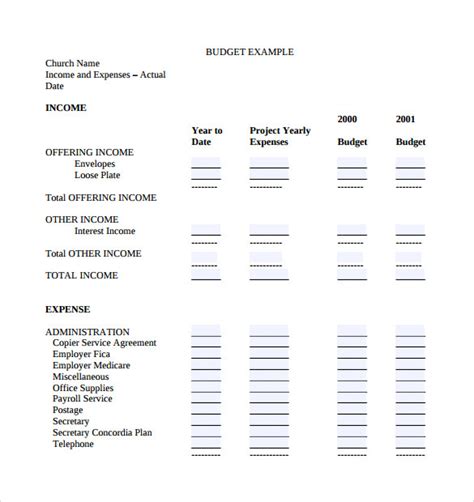Church Budgeting Made Easy: Even If You Hate Numbers
Church finances can be daunting, especially if you're not a numbers person. The thought of creating a budget might fill you with dread, but it doesn't have to be a stressful experience. This guide will walk you through the process, making church budgeting easy and understandable, even if spreadsheets give you a headache. We'll break down the process into manageable steps, offering practical tips and strategies to help your church thrive financially.
Why is Church Budgeting Important?
Before diving into the how-to, let's understand why budgeting is crucial for your church. A well-structured budget isn't just about tracking income and expenses; it's a vital tool for:
- Financial Transparency: A clear budget fosters trust and accountability among church members. Everyone can see where their contributions are going.
- Strategic Planning: Budgeting helps you align your financial resources with your church's mission and goals. Are you planning a building renovation? A new outreach program? A budget ensures you have the funds to achieve your objectives.
- Responsible Stewardship: Proper budgeting demonstrates responsible stewardship of the resources God has entrusted to your church.
- Avoiding Debt: A well-planned budget helps avoid unnecessary debt and ensures financial stability.
- Growth and Sustainability: A healthy financial outlook allows for growth and ensures the long-term sustainability of your church's ministry.
What are the Key Components of a Church Budget?
A church budget typically includes the following key components:
- Income: This section outlines all anticipated sources of income, such as tithes, offerings, fundraising events, and grants. Be realistic in your projections.
- Expenses: This is a detailed breakdown of all anticipated expenditures. Categorize expenses (e.g., salaries, utilities, building maintenance, missions, outreach programs). Being specific here is key.
- Net Income/Loss: This shows the difference between your total income and total expenses. A positive net income indicates a surplus, while a negative net income indicates a deficit.
How to Create a Simple Church Budget (Even If You're Not a Numbers Whiz)
Here's a step-by-step guide designed for simplicity and clarity:
- Gather Data: Collect financial records from the past year. This includes bank statements, receipts, and any other relevant financial documentation.
- Categorize Expenses: Organize your past expenses into meaningful categories. Use a spreadsheet program (like Google Sheets or Excel) or even a simple notebook to track this.
- Project Income: Based on past giving patterns, realistically estimate your income for the upcoming year. Consider any planned fundraising events or initiatives.
- Project Expenses: Estimate your expenses for each category, considering any anticipated changes (e.g., increased utility costs, salary adjustments).
- Create Your Budget: Input your projected income and expenses into your spreadsheet or notebook. Compare your projected income to projected expenses to determine your net income/loss.
- Review and Adjust: Regularly review your budget (monthly or quarterly) and make adjustments as needed. Life happens, and your budget should be flexible enough to adapt to unexpected events.
What Software Can Help With Church Budgeting?
Several software programs are specifically designed to simplify church financial management. These often offer features like:
- Automated Reporting: Generate reports quickly and easily, showing your financial status at a glance.
- Expense Tracking: Easily track expenses and categorize them automatically.
- Budgeting Tools: Create and manage budgets more effectively.
- Financial Analysis: Gain insights into your church's financial health.
How Often Should a Church Review its Budget?
A church should review its budget at least quarterly, and ideally monthly. This allows for timely adjustments based on actual income and expenses.
What if My Church is Running a Deficit?
Running a deficit is a common challenge for many churches. If you're facing a deficit, don't panic. Begin by:
- Identifying the Cause: Carefully examine your budget to pinpoint areas of overspending.
- Explore Cost-Cutting Measures: Identify areas where expenses can be reduced without significantly impacting ministry.
- Increase Income: Consider additional fundraising opportunities or explore grants.
- Seek Advice: Consult with a financial advisor specializing in non-profit organizations.
Conclusion
Church budgeting doesn't have to be complicated. By following these steps and utilizing available tools, even those who aren't naturally inclined towards numbers can effectively manage their church's finances. Remember, careful planning and regular monitoring are key to ensuring your church's financial health and sustainability. Focus on responsible stewardship, and you'll be well on your way to a thriving financial future for your ministry.

